Astronomers Announce Proxima Centauri’s Second Planet, And It’s Perfect For Direct Imaging
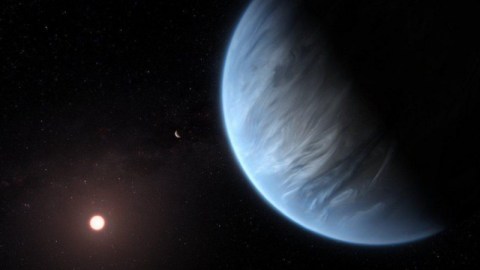
The closest star to our own doesn’t just host one rocky planet, but a second, larger ‘super-Earth’ much farther out.
Of all the stars in the Universe, the closest one to our own Solar System is Proxima Centauri: a red dwarf star just 4.2 light-years away. Smaller, dimmer and fainter than our own Sun, this star has all the wrong characteristics to support life on any of the planets that might orbit it. Despite observing this star for more than a century, no transits — where an intervening planet periodically blocks a portion of the parent star’s light — have ever been seen.
But that doesn’t mean there aren’t planets orbiting it; it just means we need to use a different technique to find them. In 2016, scientists announced the discovery of Proxima b, a 1.3 Earth mass planet that revolves around Proxima Centauri every 11 days. With an additional four years of data, a new team has come forward to announce a second planet, Proxima c, weighing about 6 Earth masses and taking around 5 years to complete an orbit. It’s the first super-Earth ever found this close to us, and might become the first one of all to ever be directly imaged. Here’s the story of Proxima c.
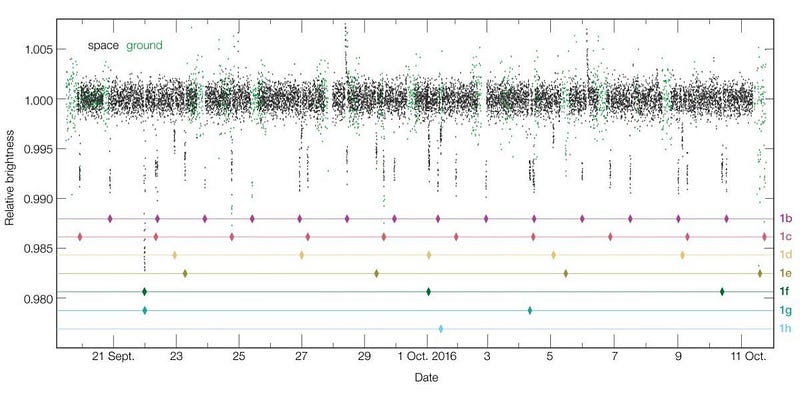
Every star in the Universe that we know of has a few properties that are roughly constant over time. All stars vary in brightness, but only slightly; most stars have a uniform average brightness. When a planet or other object passes in front of the star relative to our line-of-sight, however, that planet temporarily blocks a fraction of the star’s light, causing it to dim by a specific amount in a regular, periodic fashion.
Unfortunately, most planets aren’t fortuitously aligned like this with respect to our perspective, and Proxima Centauri’s planets are no exception. We do not observe transits coming from Proxima Centauri’s planets. But even though this is the most successful way we have of finding planets around other stars, as exemplified by NASA’s Kepler and TESS missions, there’s another, more general method that has the potential to find and characterize exoplanets whether they transit or not: the stellar wobble method.
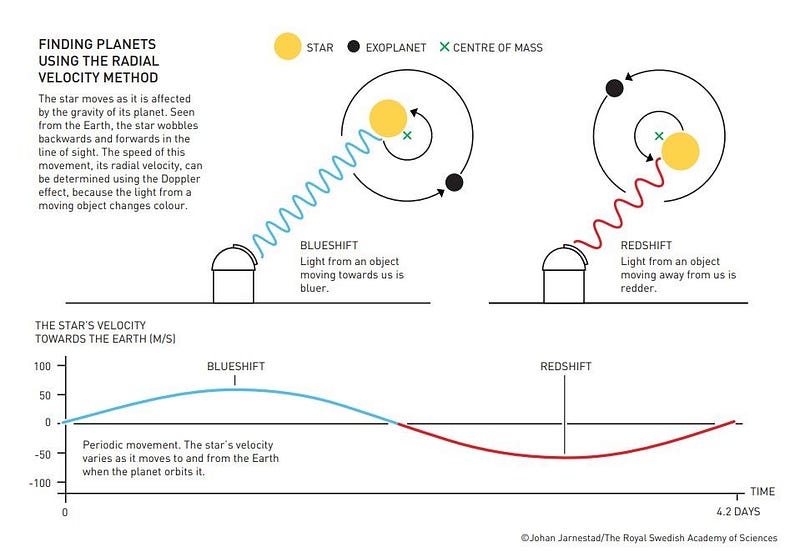
As each planet orbits its parent star, the star’s gravity pulls the planet into an elliptical orbit, exerting a gravitational force and causing the planet’s motion to change over time. But for every action, there’s an equal and opposite reaction, and so the planet also tugs on the star, causing it to change its motion in response. As the planets orbit their parent stars, the star’s motion wobbles, and the motion along our line-of-sight — known as the star’s radial velocity — varies dependent on the mass and orbital period of each planet.
You can’t observe the motion of the star directly, but you can infer it by observing its spectral lines over time. Every star contains spectral lines, which correspond to the elements present in the outermost layers of the star: absorption lines at the frequencies where elements get excited by the star’s light and emission lines where electrons de-excite in atoms, causing the emission of their own light. As the star’s motion changes, the spectral lines redshift and blueshift by detectable, important amounts.
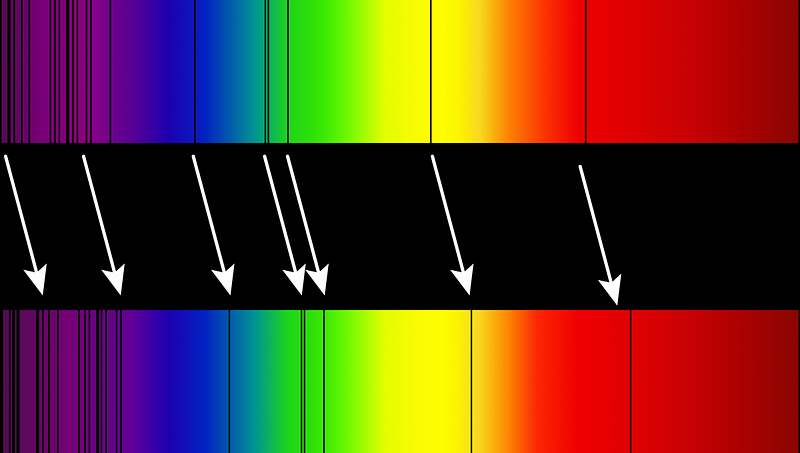
Because we can only measure the magnitude of the spectral line shifts, we have to use that to infer the mass and period of the planet without knowing how the orbit is tilted with respect to the line of sight. We can get good data for the period, but we can only infer a minimum mass (a lower limit) for the planet; we cannot determine whether it’s more massive and tilted at a more severe angle with respect to our line-of-sight.
In 2016, the data on Proxima Centauri’s spectral lines, which stretched back more than a decade at that point, became good enough for scientists to extract a small exoplanetary signal, corresponding to a 1.3 Earth mass planet with a period of just 11 days: Proxima b. First tentatively announced in April of 2019 but now with enough evidence to warrant publication in a major journal, Proxima c appears to be more massive at 5.8 Earth masses, but has an orbital period of 5.2 years. Data from two independent ESO telescope instruments — the High Accuracy Radial Velocity Planet Searcher (HARPS) and Ultraviolet and Visual Echelle Spectrograph (UVES) — have now been combined, with all signs pointing to the existence of a second, super-Earth sized planet.
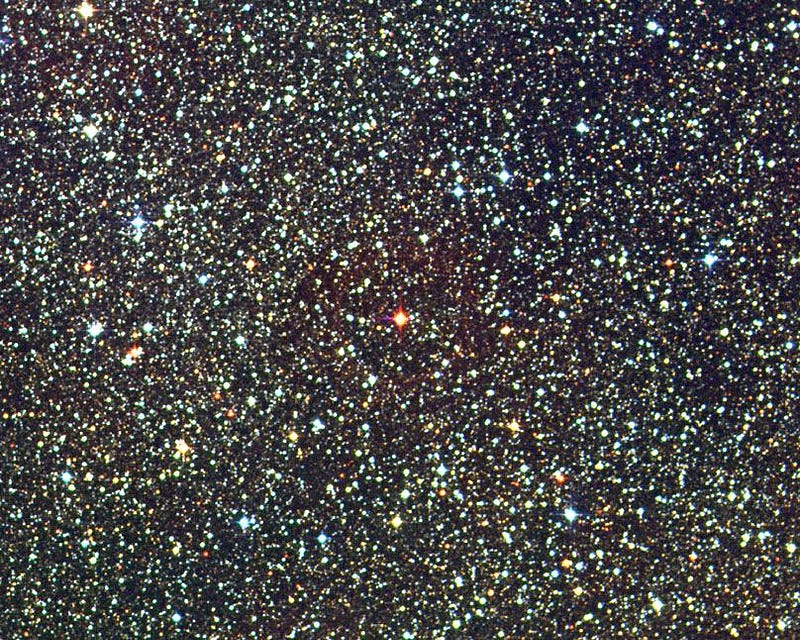
Proxima Centauri itself is an interesting star that’s very different from our own. It’s extraordinarily small, dim, and faint by solar standards, possessing just:
- 15% of the Sun’s radial size,
- 12% of the Sun’s mass,
- 0.17% of the Sun’s total luminosity,
- 0.005% of the Sun’s visual luminosity (most of the light is infrared),
all of which are typical of the lowest-mass stars of all. Proxima Centauri also exhibits very large and frequent solar flares, and is the smallest member of the trinary star system that also contains Alpha Centauri A and B. Planets that are too large, too massive, or too distant have already been ruled out by a combination of measurements and our gravitational understanding, only planets below about the mass of Saturn could exist within the equivalent orbit of Pluto.
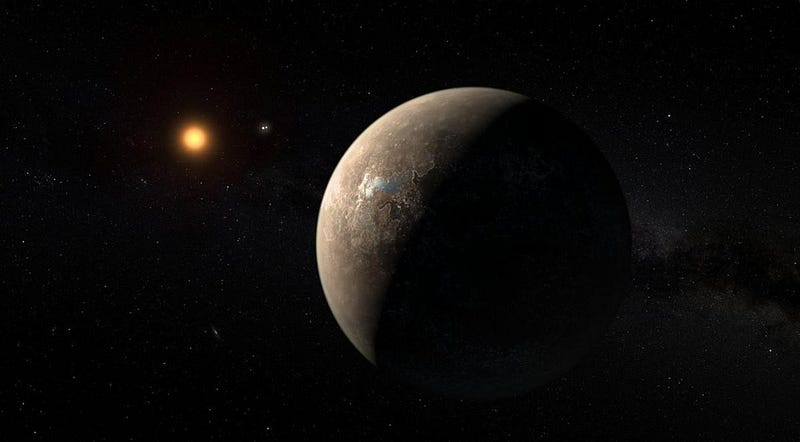
When Proxima b was discovered, it set off a firestorm of speculation, as it’s potentially the right mass to be rocky and at the right distance from its star to have temperatures similar to our own planet Earth. Immediately, people began speculating about the existence of liquid water on its surface, a possible Earth-like atmosphere, and even the possibility of life on this world.
Unfortunately, those speculations are almost certainly too optimistic for what nature can provide. At its close distance of just 7.5 million kilometers to Proxima Centauri — a mere 5% of the Earth-Sun distance — any thin, Earth-like atmosphere would have been stripped away long ago by Proxima Centauri’s flares. Without an atmosphere, there can be no liquid water, and the tidal forces will have locked one face of Proxima b to its parent star. While the day side always roasts, the night side is eternally frozen; Proxima b is thoroughly uninhabitable.
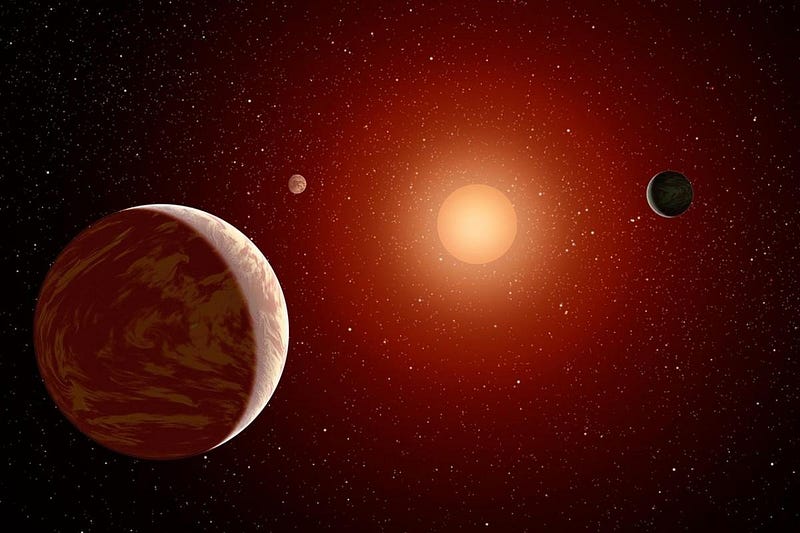
Because it doesn’t transit its parent star, yet orbits so close to it, our prospects for imaging Proxima b in the foreseeable future are also exceedingly dim. If the planet were both larger and more distant from its parent star, however, it’s possible that a next-generation telescope — equipped with either a coronagraph or even a starshade — could block the light from Proxima Centauri and take direct images of this exoplanet itself.
So far, we’ve only ever directly imaged planets that are at least many hundreds of times the mass of Earth and that revolve well beyond the orbit of Mars in our Solar System: the largest and most well-separated planets. It’s a spectacular achievement that we’ve been able to directly image planets at all, but to improve upon our current limits will require technology that far surpasses what’s available today.
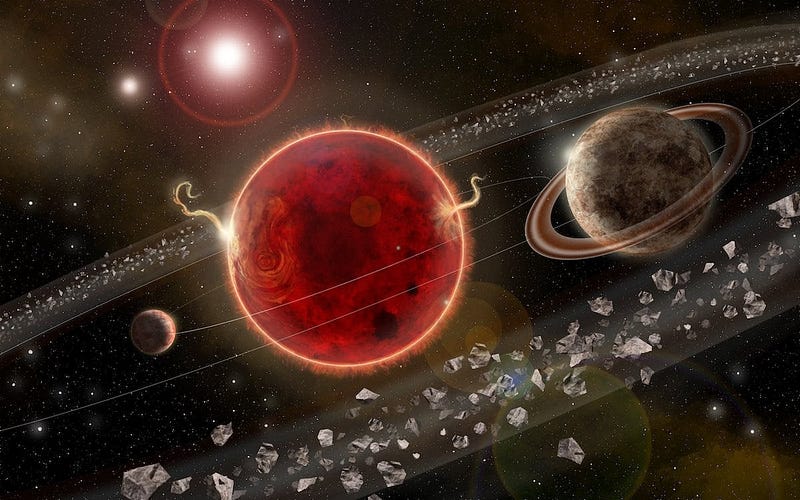
However, that’s exactly what future observatories like the James Webb Space Telescope and the future 30-meter class telescopes like GMTO and ELT promise to deliver: the capability of viewing super-Earths that are well-enough separated in space from their parent star.
That’s what truly makes this announcement of Proxima c so exciting. If the planet turns out to be real and gets confirmed, its maximum separation will take it approximately 1 arc-second (1/3600th of a degree) away from Proxima Centauri at its farthest, which is within the capabilities of these next-generation observatories to spot directly. The orbital properties of this world would take it just 1.5 Astronomical Units (about 220 million km) away from Proxima Centauri, much closer than any world that’s ever been directly imaged before.
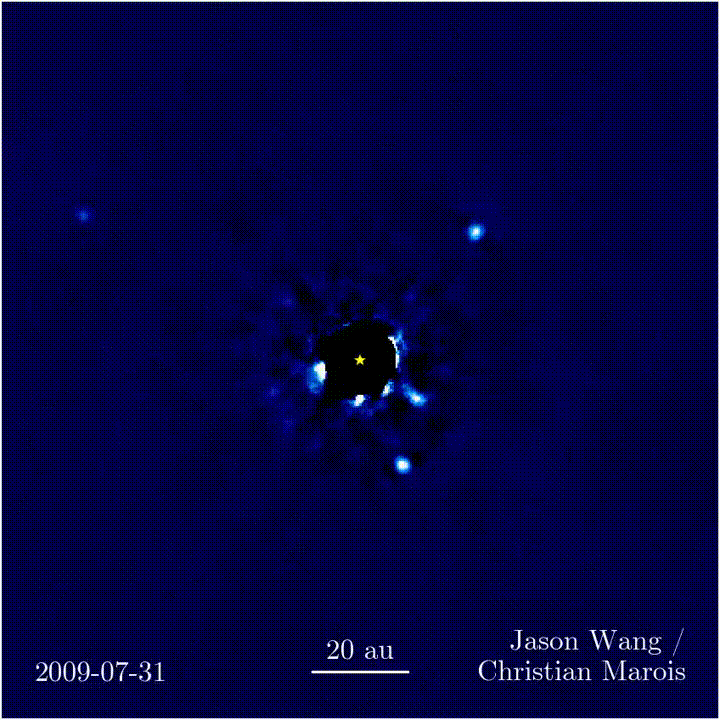
It’s also guaranteed, with a minimum mass of 5.8 Earths at its Mars-like distance of 220 million km from Proxima Centauri, to be a cold, puffy world similar to a miniature version of Neptune. Although the common term for a world like this is “super-Earth,” we can be confident that it wouldn’t be Earth-like at all, possessing a large hydrogen-and-helium envelope around it, responsible for most of both the mass and volume of this world.
Assuming that the efforts to directly image Proxima c finally succeed, this exoplanet will immediately become both the smallest one and the closest one to its star, orbitally, to ever be seen. For the first time, we’ll have an image of an exoplanet barely larger than (perhaps double the radius of) Earth, something that’s never been achieved before. While future data from the Gaia mission can confirm this planet and pin down its mass, it’s the ground-based and space-based observatories coming online later this decade that offer the potential to actually take a picture of this planet.
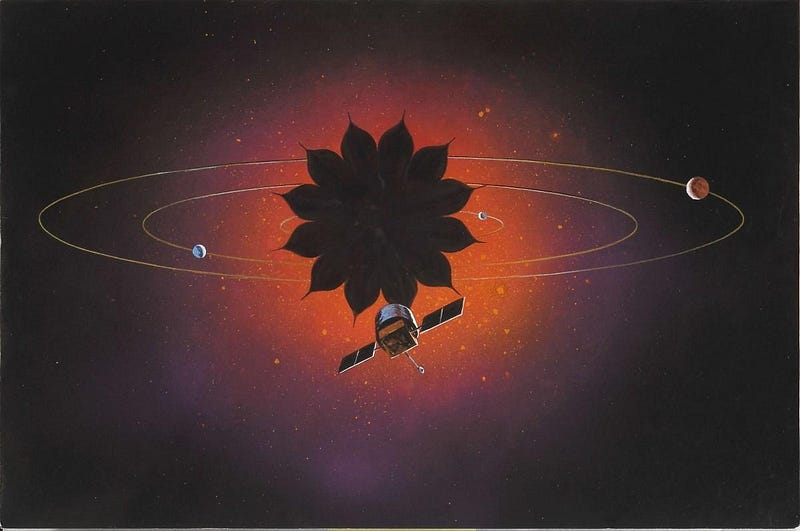
Just a few years ago, nobody knew if the closest stars to us possessed any planets at all, or whether they were forbidden for some reason. As we’ve built up bigger and better suites of data, made possible by superior instruments and observatories, the first two planets around the nearest star of all to us, Proxima Centauri, have now been revealed.
The first one was Proxima b, Earth-like in size and temperature but barren and locked like Mercury. It is unlikely to yield its secrets anytime soon. But Proxima c, at the distance of Mars and with about six times the Earth’s mass, could become the first planet this small and this close to its star to actually have its photograph taken directly. While there are many mysteries to be uncovered about how a planet like this could form and evolve in this particular star system, its existence not only seems likely, but the potential is there to learn more about this world than any similar world ever discovered. If you want to know what a super-Earth (or mini-Neptune) world looks like, keep your eyes peeled for the first images of Proxima c!
Ethan Siegel is the author of Beyond the Galaxy and Treknology. You can pre-order his third book, currently in development: the Encyclopaedia Cosmologica.





